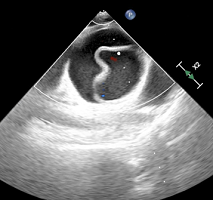1. Wilson TA, Graves SA. Pediatric considerations in a general postanesthesia care unit. J Post Anesth Nurs. 1990; 5: 16-24.
2. Dahmani S, Mantz J, Veyckemans F. Case scenario: severe emergence agitation after myringotomy in a 3-yr-old child. Anesthesiology. 2012; 117: 399-406. doi: 10.1097/ALN. 0b013e31825fb069
3. Aono J, Ueda W, Mamiya K, Takimoto E, Manabe M. Greater incidence of delirium during recovery from sevoflurane anesthesia in preschool boys. Anesthesiology. 1997; 87: 1298-1300.https://doi.org/10.1097/00000542-199712000-00006
4. Kain ZN, Caldwell-Andrews AA, Maranets I, et al. Preoperative anxiety and emergence delirium and postoperative maladaptive behaviors. Anesth Analg. 2004; 99: 1648-1654.https://doi.org/10.1213/01.ane.0000136471.36680.97
5. Aouad MT, Kanazi GE, Siddik-Sayyid SM, Gerges FJ, Rizk LB, Baraka AS. Preoperative caudal block prevents emergence agitation in children followings evoflurane anesthesia. Acta Anaesthesiol Scand. 2005; 49: 300-304. doı: 10.1111/j.1399- 6576.2005.00642.x
6. Dahmani S, Stany I, Brasher C, et al. Pharmacological prevention of sevoflurane-and desflurane-related emergence agitation in children: a meta-analysis of published studies. Br J Anaesth. 2010; 104: 216-223. doi: 10.1093/bja/aep376
7. Voepel-Lewis T, Malviya S, Tait AR. A prospective cohort study of emergence agitation in the pediatric post anesthesia care unit. Anesth Analg. 2003; 96: 1625-1630. doi: 10.1213/01.ANE.0000062522.21048.61
8. Welborn LG, Hannallah RS, Norden JM, Ruttimann UE, Callan CM. Comparison of emergence and recovery characteristics of sevoflurane, desflurane and halothane in pediatric ambulatory patients. Anesth Analg. 1996; 83: 917-920. doi: 10.1097/00000539-199611000-00005
9. Jacob Z, Li H, Makaryus R, et al. Metabolomic profiling of children’s brains undergoing general anesthesia with sevoflurane and propofol. Anesthesiology. 2012; 117: 1062-1071. doi: 10.1097/ALN.0b013e31826be417
10. Vakkuri AP, Seitsonen ER, Jäntti VH, et al. A rapid increase in theinspiredconcentration of desflurane is not associated withe pileptiformence phalogram. Anesth Analg. 2005; 101: 396-400. doi: 10.1213/01.ane.0000156562.33415.78
11. Anghelescu DL, Rakes LC, Shearer JR, Bikhazi GB. Prevention of emerge agitation in seven children receiving low dose ketamine and propofol total intravenous anesthesia. AANA J. 2011; 79(3): 238-242.
12. Hadi SM, Saleh AJ, Tang YZ, Daoud A, Mei X, Ouyang W. The effect of KETODEX on the incidence and severity of emergence agitation in children undergoing adenotonsillectomy using sevoflurane based-anesthesia. Int J Pediatr Otorhinolaryngol. 2015; 79(5): 671-676. doi: 10.1016/j.ijporl.2015.02.012
13. Tan Y, Shi Y, Ding H, Kong X, Zhou H, Tian J. μ-Opioidagonists for preventing emergence agitation under sevoflurane anesthesia in children: a meta-analysis of randomized controlled trials. Paediatr Anaesth. 2016; 26(2): 139-150. doi: 10.1111/pan.12815
14. Fang XZ, Gao J, Ge YL, Zhou LJ, Zhang Y. Network meta-analysis on the efficacy of dexmedetomidine, midazolam, ketamine, propofol, and fentanyl for the prevention of sevoflurane-related emergence agitation in children. Am J Ther. 2015.
15. Rosen HD, Mervitz D, Cravero JP. Pediatric emergence delirium: Canadian pediatric anesthesiologists’ experience. Paediatr Anaesth. 2016; 26(2): 207-212. doi: 10.1111/pan.12812








